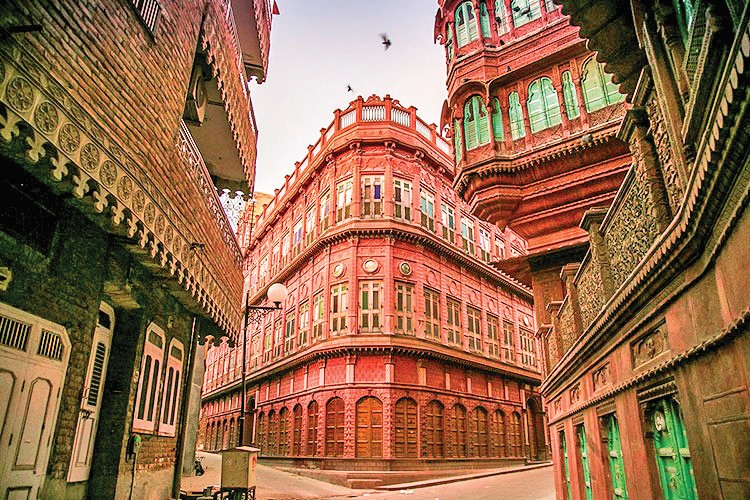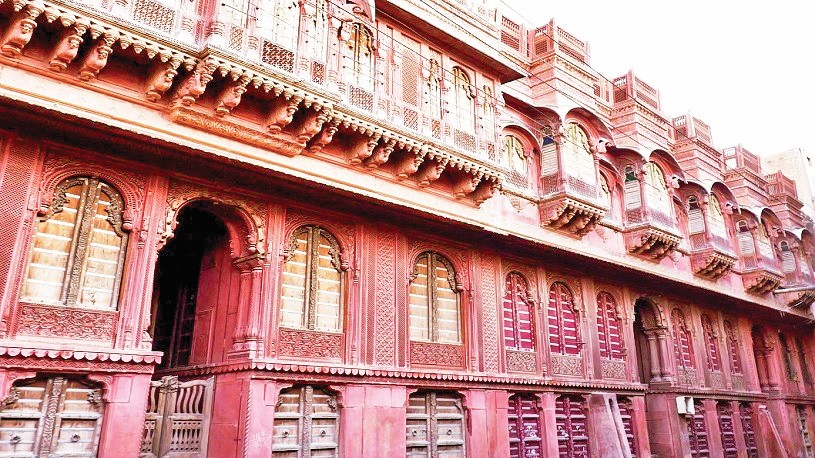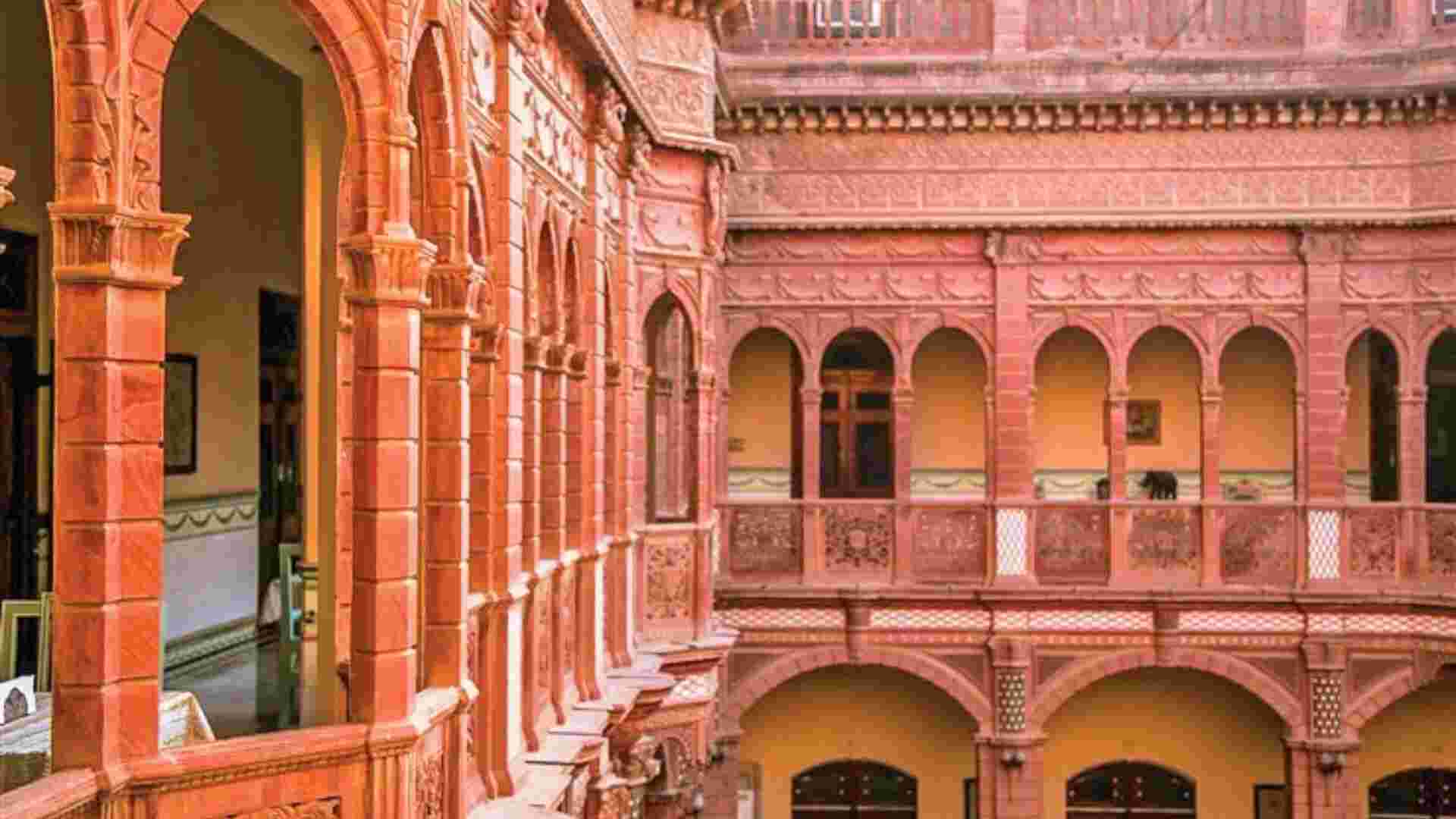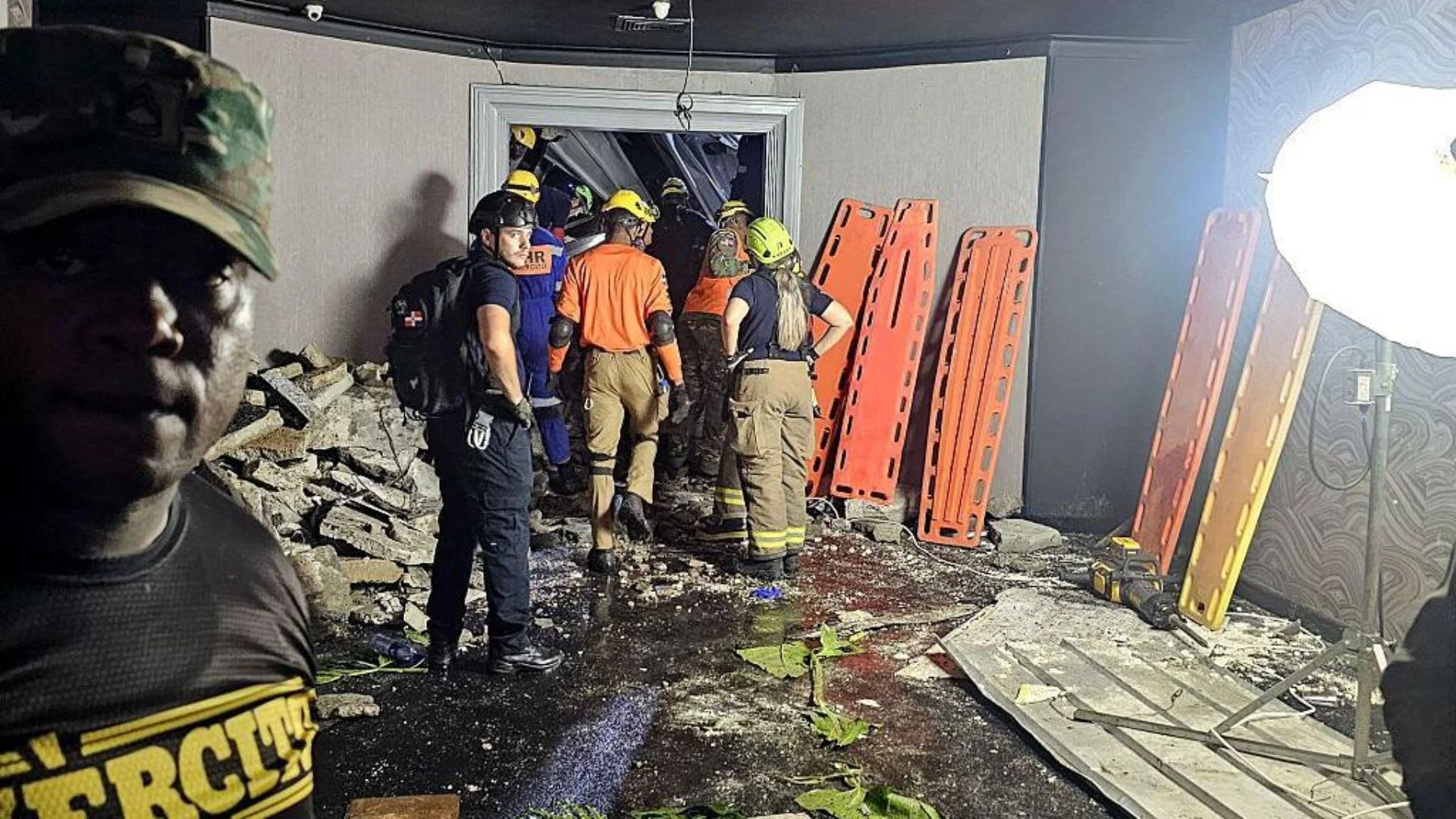The cluster of Rampuria havelis, often referred to as the “pride of Bikaner,” offers visitors a glimpse into the lavish lifestyle of the city’s wealthy merchant class during its golden age.
Merchants and Mansions
Built in the late 15th century by the wealthy Rampuria family, prominent traders and financiers of their time, the Rampuria Haveli complex showcases the prosperity that Bikaner enjoyed due to its strategic position on ancient trade routes. The family’s success in business allowed them to construct a series of interconnected mansions, each more elaborate than the last.
Architectural masterpiece of Bikaner
The Rampuria Haveli is not a single structure but a collection of mansions, all built in the distinctive Rajputana style with significant Mughal influences. This blend of architectural traditions results in a unique aesthetic that sets the Rampuria Haveli apart from other historical buildings in the region.

A Stone Canva
The most striking feature of the Rampuria Haveli is its elaborate facade. Crafted from the region’s famous red sandstone, the exterior is a masterpiece of intricate carving and delicate lattice work. The artisans who worked on the haveli demonstrated extraordinary skill, transforming solid stone into lace-like patterns that adorn windows, balconies, and archways.
Windows to the Past
One of the most distinctive elements of the Rampuria Haveli’s architecture is its jharokhas – overhanging enclosed balconies. These ornate structures served multiple purposes as they provided ventilation, allowed women to observe street life while maintaining privacy, and showcased the family’s wealth and artistic taste.
Each jharokha is a work of art in itself, featuring intricate carvings, delicate pillars, and often topped with graceful domes. The play of light and shadow on these structures throughout the day creates an ever-changing tapestry of patterns on the haveli’s facade.

The interior Splendor
While the exterior of the Rampuria Haveli is impressive, the interior matches its grandeur. Visitors stepping inside are transported to a world of luxury and refinement that characterized the lives of Bikaner’s elite during the medieval period.
Courtyards and Fountains
Central to the haveli’s design are its spacious courtyards. These open spaces served as the heart of family life, providing natural light and ventilation to the surrounding rooms. Many courtyards feature elegant fountains, which not only added to the aesthetic appeal but also helped cool the air during scorching summer months.
Frescoes and Murals
The walls and ceilings of the Rampuria Haveli are adorned with vibrant frescoes and intricate murals. These paintings depict scenes from Hindu mythology, historical events, and everyday life in medieval Rajasthan. The use of natural pigments has allowed many of these artworks to retain their vivid colors over the centuries.
Mirror Work and Inlay
Several rooms in the haveli showcase exquisite mirror work, known as sheesh mahal. Thousands of tiny mirrors are arranged in geometric patterns, creating a dazzling effect when lit. This technique, combined with intricate inlay work using precious and semi-precious stones, demonstrates the immense wealth and refined tastes of the Rampuria family.
Innovative Designs of the haveli
The architects of the Rampuria Haveli incorporated several innovative features to provide comfort in Bikaner’s harsh desert climate.
Ventilation Systems
The haveli’s design includes clever natural ventilation systems. Small openings near the ceiling allow hot air to escape, while lower windows and doors facilitate the entry of cooler air. This creates a natural airflow that helps maintain a comfortable temperature inside the building.
Thick Walls and Insulation
The haveli’s thick sandstone walls serve a dual purpose. They provide structural stability to the multi-story building and act as excellent insulators, keeping the interiors cool during hot days and warm during cold desert nights.
Water Conservation
Like many structures in water scarce Rajasthan, the Rampuria Haveli incorporates rainwater harvesting systems. Sloping roofs and channels direct rainwater into underground tanks, ensuring a supply of fresh water even during dry spells.
Its Cultural Significance
The Rampuria Haveli is not just an architectural piece of work; but the cultural and social life of medieval Bikaner. The layout of the haveli, with its separate sections for men and women, reflects the social norms of the time. The presence of small shrines within the complex highlights the integration of religious practices into daily life.
Preservation and Restoration
In recent years, efforts have been made to preserve and restore the Rampuria Haveli. While some parts of the complex remain private property, others have been opened to the public, allowing visitors to experience the grandeur of Bikaner’s golden age. Restoration work has focused on cleaning the intricate stone carvings, repairing damaged frescoes, and reinforcing the structure while maintaining its original character. These efforts ensure that future generations can continue to marvel at this architectural gem.
Best Time to Visit, guided tours and photography perspectives
The haveli is open to visitors throughout the year, but the cooler months from October to March offer the most comfortable climate for exploration. Early morning or late afternoon visits are recommended for the best light for photography and a more pleasant experience. While it’s possible to explore parts of the haveli independently, guided tours offer invaluable insights into the building’s history, architecture, and cultural significance. Local guides can point out easily missed details and share fascinating stories about the haveli and its former inhabitants.
Photography is generally allowed in the public areas of the haveli. The intricate carvings, colorful frescoes, and play of light through jharokhas offer countless opportunities for stunning photographs.
One of a kind heritage site
Unlike many historical buildings, the Rampuria Haveli remains a part of Bikaner’s living heritage. Some sections of the haveli complex are still inhabited by descendants of the original owners, maintaining a continuity of tradition that spans centuries. This blend of past and present creates a unique atmosphere. Visitors might glimpse traditional Rajasthani life continuing amidst the historical grandeur, offering a rare authenticity to the experience.
A Must-Visit Destination
Its stunning facade, intricate interiors, and historical significance make it a must visit destination for anyone interested in Rajasthan’s rich cultural heritage. As visitors wander through its ornate halls and peer out from its delicately carved jharokhas, they’re transported to an era of craftsmanship and artistic vision. The Rampuria Haveli is more than just a beautiful building; it’s a tangible link to Bikaner’s past and the enduring allure of Rajasthan’s architectural intelligence.






















